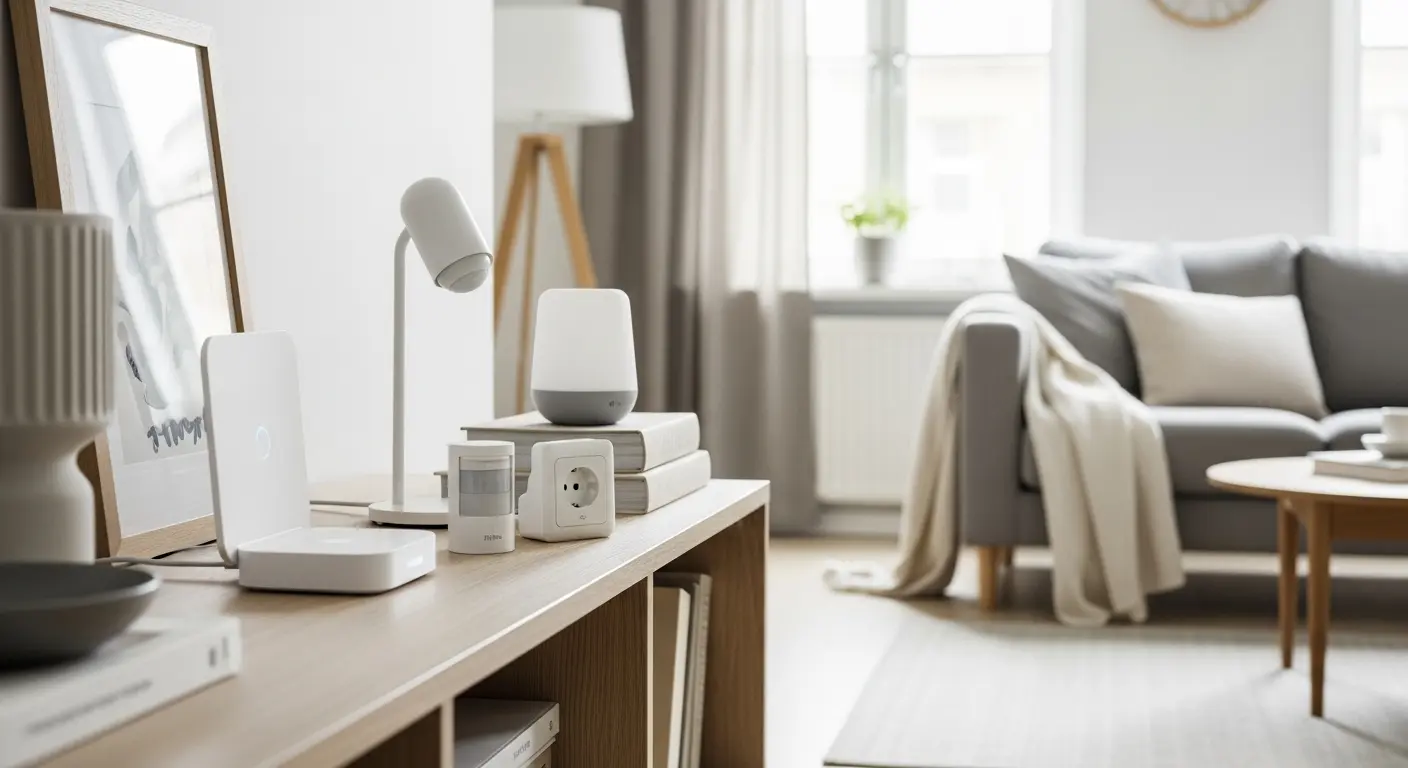
Did you know that over 60% of people starting a smart home feel lost when choosing their first devices? The good news is that, with the Zigbee protocol, it’s possible to create efficient, integrated, and minimalist-designed automation from the start.
Unlike other technologies, Zigbee allows connecting various devices in a mesh network, with low power consumption, fast response, and clean integration — perfect for those seeking practicality without cluttering the environment’s aesthetics.
In this article, you will discover the 7 essential Zigbee devices that cannot be missing from a complete, functional, and elegant smart home. Let’s get started?
Why Choose Zigbee for Your Smart Home?
If you want an organized, efficient smart home with fewer cables, Zigbee is the right choice. It is a wireless communication protocol designed especially for home automation, connecting devices intelligently and economically, keeping the environment clean and functional.
Mesh network connection: more range, fewer failures
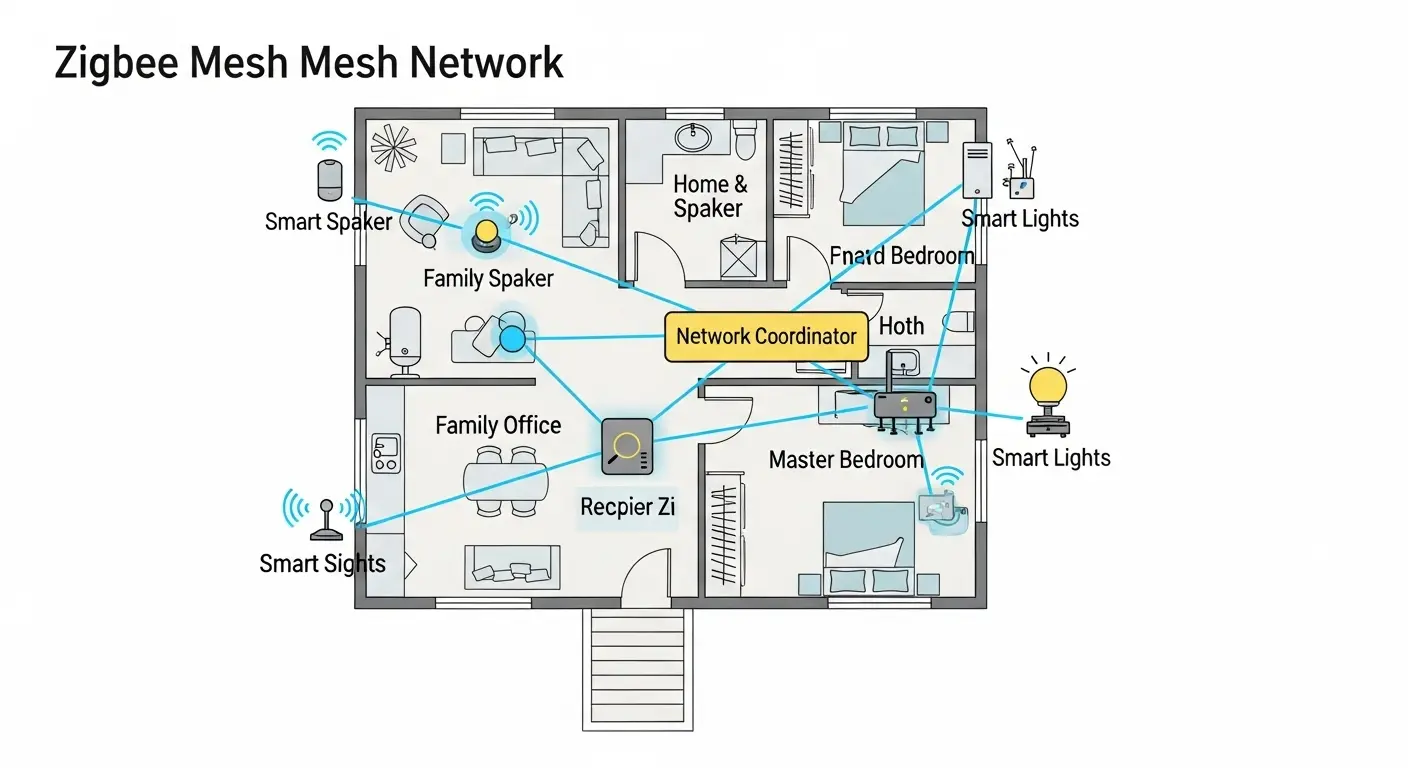
Unlike traditional Wi-Fi, Zigbee uses a mesh network, where each device acts as a signal repeater. This means:
- Greater stability even in homes with thick walls;
- Expanded range as new devices are added;
- Fast and synchronized communication between gadgets.
Reduced energy consumption
Zigbee devices are known for their low energy consumption, making them ideal for presence sensors, light bulbs, and other appliances that operate continuously. This saves energy and makes your automation more sustainable.
Simple and discreet integration
With compatible hubs like Amazon Echo, Samsung SmartThings, and Home Assistant, you can centralize home control in one place — avoiding multiple apps, physical controllers, and visual clutter.
👉 Read also: Zigbee or Wi-Fi System? Find Out Which is the Best Option for Your Smart Home
The 7 Essential Zigbee Devices for a Complete Smart Home
If you’re starting to set up your home automation with Zigbee technology, these are the indispensable devices to ensure functionality, organization, and a smart environment without excess.
1. Central Zigbee Hub (e.g., Echo, Aqara, SmartThings)
The hub is the “brain” of the Zigbee network. It allows all devices to “talk” to each other and be controlled by a single app or voice assistant.
- Function: Connect and manage Zigbee devices in a mesh network.
- Where to use: In the central point of the house (living room or office).
- Benefits: Total integration, fewer cables, and unified control — ideal for not relying on multiple apps.
2. Presence and Motion Sensors
These sensors detect motion and can automatically activate lights, alarms, or notifications.
- Function: Trigger automations based on presence.
- Where to use: Hallways, bathrooms, house entrance.
- Benefits: Avoids the use of switches, reduces consumption, and improves security without cluttering the visual space.
3. Smart Light Bulbs with Zigbee (Philips Hue, Tuya, etc.)
With color and intensity adjustment, these bulbs make the environment more comfortable and functional.
- Function: Control lighting automatically or by voice.
- Where to use: Living room, bedroom, office, kitchen.
- Benefits: Adjustable atmosphere, integration with routines, and discreet design with standard installation.
4. Zigbee Smart Plugs
Control the power supply to any common appliance.
- Function: Turn devices on/off remotely or by schedule.
- Where to use: Appliances, coffee makers, lamps.
- Benefits: Energy saving, consumption monitoring, and easy automation without exposed wires.
5. Door and Window Opening Sensors
Perfect for security and smart ventilation.
- Function: Notify or trigger scenes when opening/closing doors and windows.
- Where to use: Main entrance, balcony, bedroom windows.
- Benefits: Passive security, air and natural light control — without the need for visible cameras.
6. Wireless Smart Switches
Control scenes or devices without wall breaking.
- Function: Trigger scenes with just one touch.
- Where to use: Next to the bed, at the room entrance.
- Benefits: Simple installation with adhesive tape, ideal for renting or not breaking walls. Minimalist and functional look.
7. Programmable Buttons and Control Panels
Allow activating various functions with just one button.
- Function: Program actions like “relax mode” or “leaving home.”
- Where to use: Environments with more than one automation.
- Benefits: Intuitive and aesthetic control, with a clean design that replaces remote controls.
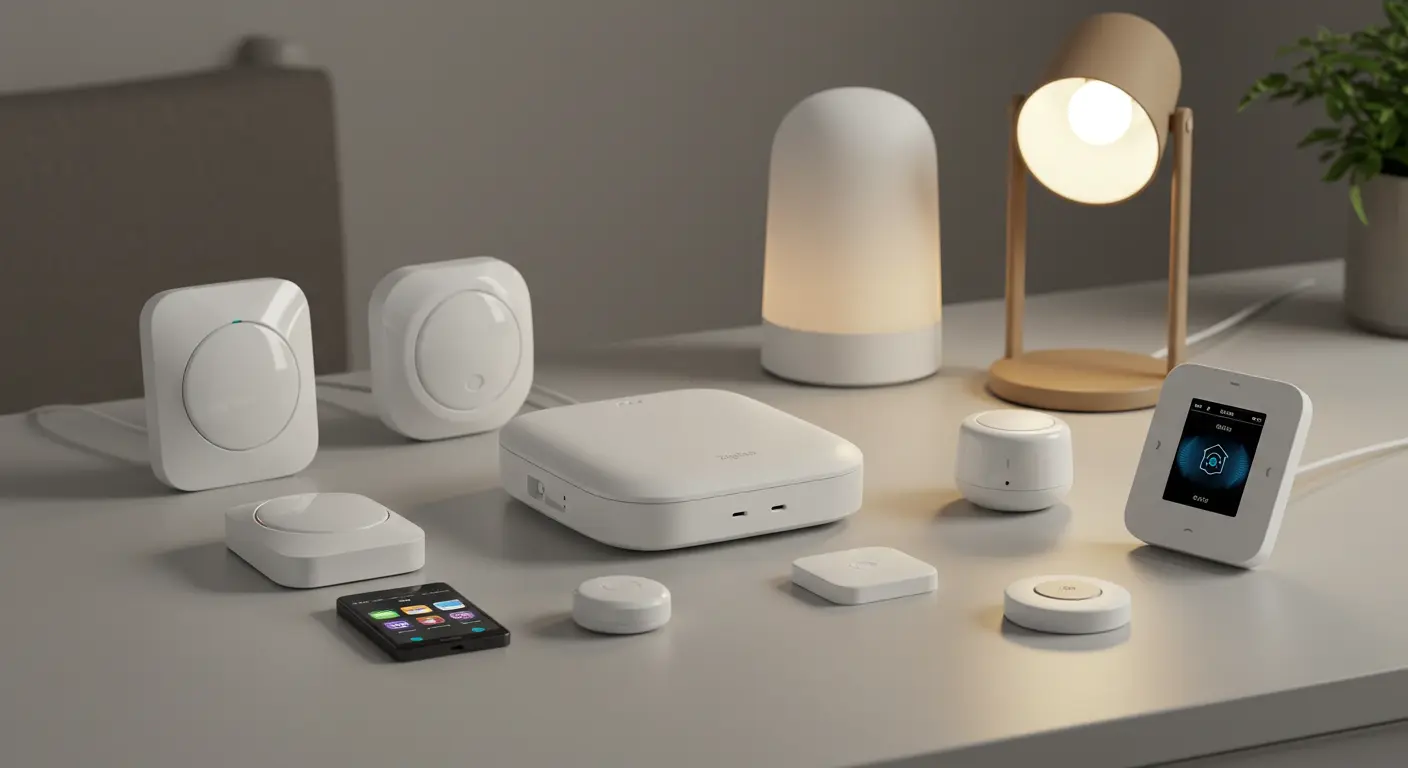
How to Integrate Zigbee Devices Smartly and Minimally
Automating your home with Zigbee doesn’t mean filling the house with visible technology. On the contrary: the proposal is to integrate devices functionally and discreetly, respecting the clean aesthetic and organization of spaces.
Plan the network focusing on the most used environments
Before installing everything at once, evaluate where automation will have the most impact on daily life:
- House entrance → automatic lighting and presence sensors
- Bedroom → relaxation routines with adjustable light and temperature
- Kitchen → smart plugs for appliances and opening sensors
- Living room → central assistant with voice commands
💡 Tip: Start with one room and evolve as needed — this helps avoid excess and maintain a minimalist look.
Group devices by scenes and routines
Organizing your devices by automated routines brings fluidity and reduces the number of manual commands:
- “Night mode”: soft light + turn off plugs + activate alarm
- “Leaving home”: everything off + alerts activated
- “Arriving home”: turn on lights + open blinds
You can easily create these routines in the Zigbee hub app or by integrating with Alexa, Google Home, or SmartThings.
Avoid visible wires and hubs
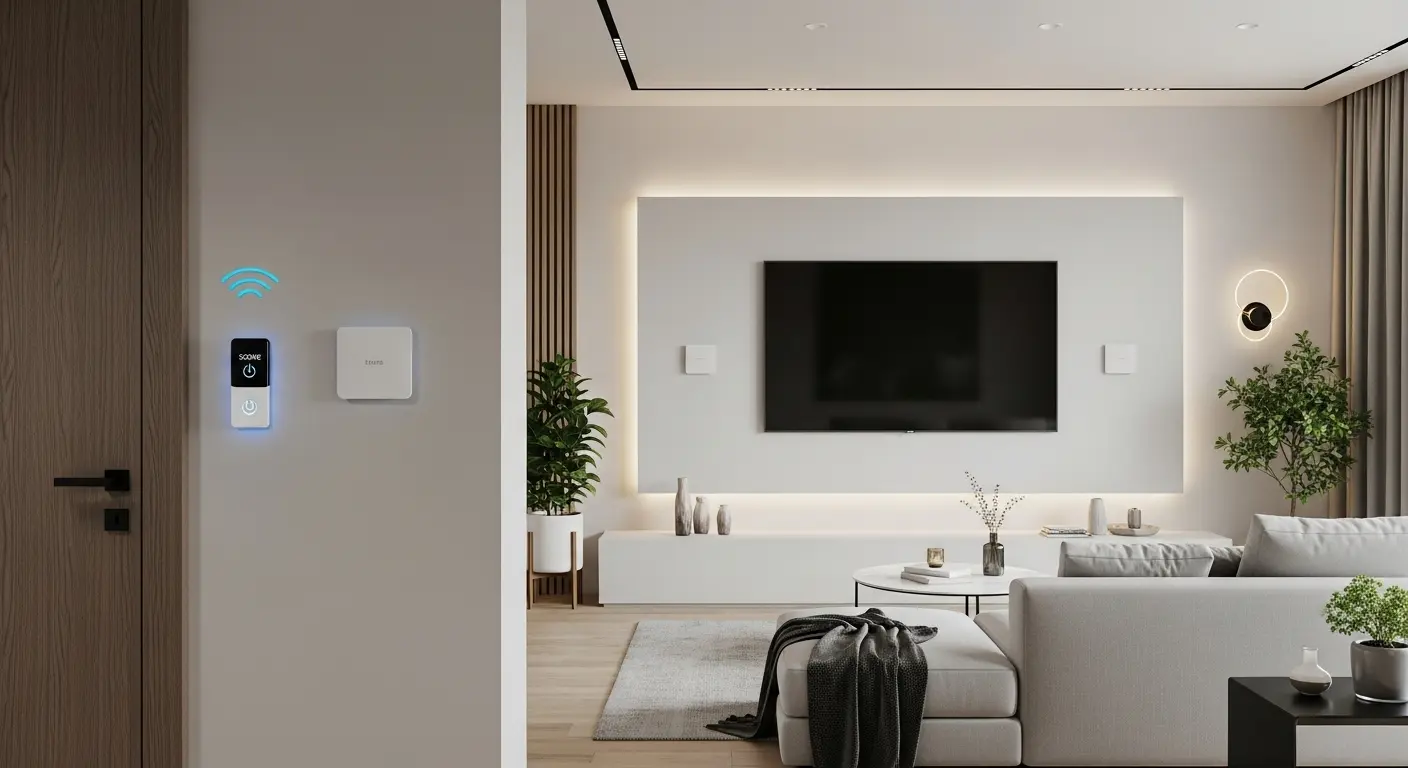
Even if technology is present, it doesn’t need to be visible:
- Prefer hubs built into shelves or drawers
- Use small sensors with neutral finishes
- Hide cables with thin conduits or custom furniture
The goal is to maintain functionality without compromising visual balance.
For those seeking a more elegant and discreet integration, it’s worth exploring solutions that completely hide technology in the environment. 👉 See also: Minimalist Design with Hidden Technology: 6 Tips for Small Spaces and discover how to combine functionality and aesthetics in compact spaces.
Use programmable panels and buttons in strategic locations
To enhance the intuitive experience, position Zigbee buttons or scene panels in strategic points — such as near the door, next to the bed, or in the leisure area. They eliminate the need for apps or voice commands all the time.
For those who want to delve deeper into the technical specifications and the future of automation with Zigbee, it’s worth checking the recommendations of the Connectivity Standards Alliance, the official body responsible for the protocol. The website provides updated information on certified devices, security, and interoperability between brands — ideal for those who want to build a reliable and scalable Zigbee network.
Care When Setting Up Your Zigbee Network
Although Zigbee is recognized for its efficiency, stability, and reduced energy consumption, some installation precautions can ensure an even better experience — especially in small environments where the signal can be affected by physical obstacles.
Tips for better range and fast response
Even in compact apartments, it is essential to ensure that communication between devices is fluid. To do this:
- Avoid installing devices in very enclosed corners or behind metallic surfaces.
- Prefer to position devices in locations with direct line of sight between them, even if partial.
- Keep the central Zigbee hub centralized in the environment to uniformly extend the range.
These simple precautions prevent response failures, especially in automated routines, such as turning on the light when presence is detected.
Sensor and repeater placement
Zigbee sensors, such as motion, opening, or temperature sensors, should be strategically installed:
- Presence sensors: in passage areas like hallways, house entrance, or kitchen.
- Opening sensors: near the top of doors and windows, where there is less interference.
- Avoid installing sensors too close to each other, to prevent command overlap.
Zigbee repeaters — such as some smart light bulbs or plugs — should be distributed in strategic locations to strengthen the connection mesh.
When to consider Zigbee repeaters (plugs/bulbs)
Unlike Wi-Fi, Zigbee creates a mesh network, where each powered device can repeat the signal. This means that adding strategically placed Zigbee plugs or light bulbs helps expand coverage.
Consider using repeaters if:
- The network experiences response delays in basic commands.
- Sensors are too far from the central hub.
- You notice frequent communication drops in automated routines.
💡 Tip: Start with a basic number of devices and, as you expand, add repeaters to maintain the network’s efficiency and stability.
Zigbee and Minimalism: Why This Combination Works?
The union between Zigbee and minimalism is one of the most harmonious in the smart home universe. This is because both share the same essence: doing more with less, focusing on simplicity, functionality, and clean aesthetics.
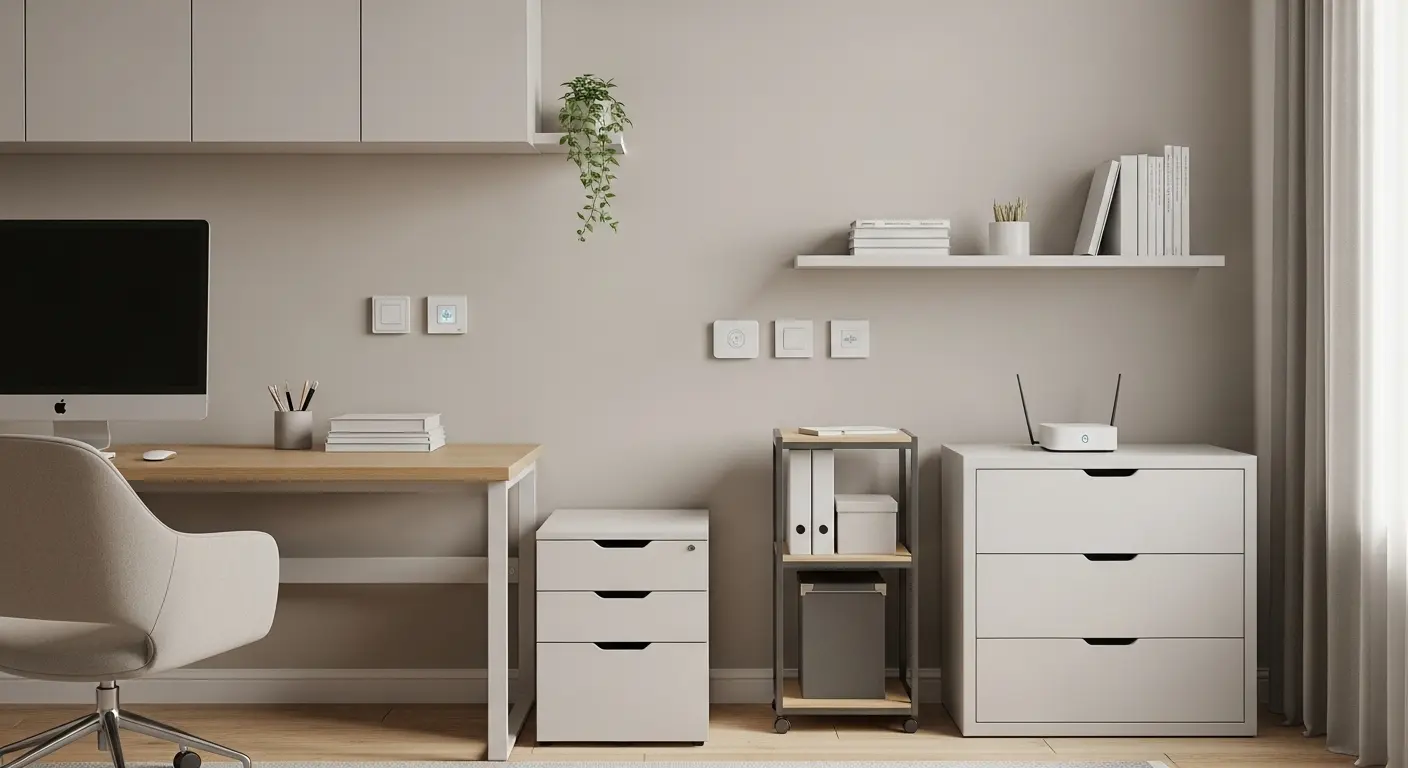
Discreet devices with neutral design
One of the great advantages of Zigbee devices is that many of them are designed to visually integrate into the environment, without drawing attention.
- Small motion and door opening sensors in neutral tones.
- Wireless switches with matte finish and flat surfaces.
- Compact central hubs, without blinking lights or exposed cables.
This allows setting up complete automation without visually cluttering spaces — essential for those living in small environments and wanting to maintain the lightness and balance of the decor.
👉 See also: [Minimalist Design with Hidden Technology: 6 Tips for Small Spaces]
Fewer wires, more centralized control
The Zigbee protocol works through a wireless mesh network, which means:
- Fewer cables scattered around the house.
- Unified control by a single hub or app.
- Integration with voice assistants and centralized platforms like Google Home, Alexa, and Apple HomeKit.
This centralization reduces complexity and contributes to the visual and functional fluidity of the environment — two fundamental pillars for a minimalist home.
Furthermore, the fact that many Zigbee devices do not require wires or complex installations facilitates adaptations in small apartments or rented environments, where structural changes are not an option.
💡 Minimalism does not mean absence of technology — but rather technology serving simplicity. And Zigbee is the ideal protocol to make this possible.
Summary Table: Device x Function x Ideal Location
To make planning your Zigbee Smart Home easier, we’ve prepared a table summarizing the key devices, their main functions, ideal usage locations, and a practical installation tip to ensure efficiency without compromising your minimalist design:
| Device | Main Function | Where to Use | Installation Tip |
|---|---|---|---|
| Zigbee Hub | Centralizes all devices | Living room, office | Choose models compatible with multiple brands |
| Motion Sensor | Automates lighting and enhances security | Hallways, entryway | Position above eye level to avoid blind spots |
| Smart Bulb | Lighting with remote/voice control | Living room, bedroom, kitchen | Use with discreet fixtures to highlight the clean design |
| Smart Plug | Energy monitoring and control | Kitchen, home office | Install in strategic spots to avoid cable clutter |
| Door/Window Sensor | Security and real-time alerts | Windows, entry doors | Place on inner edges, near the hinges |
| Wireless Switch | Lighting control without wall damage | Bedroom, living room, rental spaces | Mount with 3M tape to avoid drilling walls |
| Programmable Buttons | Quick routine activation | Nightstand, entryway | Program to turn on lights or activate a night scene |
These devices, in addition to being compact and multifunctional, fit perfectly into minimalist projects, offering efficient automation with minimal visual impact.
Conclusion: Start with the Essentials and Automate Smartly
After learning about the 7 essential Zigbee devices to build a complete smart home, it’s clear that you can achieve functional, discreet, and efficient automation without overwhelming your space—especially in small homes.
Sensors, hubs, smart plugs, and programmable buttons form the foundation of a smart system that grows with you. Start small, focusing on what truly makes a difference in your daily routine—like automated lighting or energy control. As you become more familiar with the technology, you can expand your network modularly, maintaining visual balance and spatial lightness.
💡 Remember: The secret to a minimalist smart home isn’t about how many devices you own, but about efficient integration, discreet design, and centralized control. With Zigbee technology, you’ll enjoy more autonomy, comfort, and energy savings—all with a clean aesthetic and a clear sense of purpose.
Which of these devices would you install first in your home? Share your thoughts in the comments and inspire others who are also beginning their minimalist automation journey!
